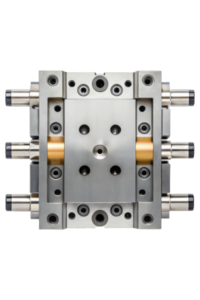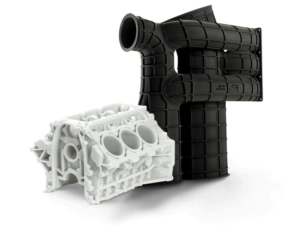The success of your plastic part is influenced by various critical elements that must work together harmoniously. When designing with plastics, there are several factors that need to be taken into consideration to achieve optimal results. Let’s explore these factors in detail:
- Draft Angles:
- A typical draft angle is 1º, with 1/2º for ribs.
- Some draft is better than none.
- When minimum draft is required, use fine polish in the direction of ejection.
- Allow an additional 1º of draft for every 0.001-inch depth of texture.
- Wall Thickness:
- Maintain uniform wall thickness for even melt flow and uniform shrinkage.
- Core out thick sections to achieve uniform shrinkage and faster cycle times.
- Transition changes in wall thickness gradually to avoid stress concentrations and cooling differences.
- Gate into thick sections for improved packing and reduced stresses.
- Fillets and Radii:
- Fillet radius should be 25-60% of the nominal wall thickness to avoid stress concentrations.
- Outside corner radius should equal the inside radius plus the wall thickness to maintain uniform wall thickness and avoid stress concentrations.
- Sharp corners should always be avoided, as they can lead to part failure, stress concentrations, poor flow patterns, and increased tool wear.
- Bosses:
- Bosses are projections designed to accept inserts, self-tapping screws, etc., for mounting, fastening, or assembling parts.
- The boss outer diameter (O.D.) should be twice the inner diameter (I.D.) to allow the wall to increase as the boss size increases.
- The wall thickness at the base of the boss should be less than 60% of the nominal wall thickness to reduce sink marks and cycle time.
- The boss height should be less than 3 times the O.D. to minimize excess mass and ensure sufficient cooling of the core pin.
- The base of the boss should have a radius of 25-50% of the nominal wall to minimize stress concentrations.
- Ribs:
- The base of the rib should be 50-60% of the nominal wall thickness to avoid sink marks and excess mass.
- The maximum rib height should be 3 times the nominal wall thickness to prevent filling difficulties and sticking in the mold.
- Use a draft angle of 1º-1.5º, with a minimum of 1/2º for ejection.
- The base of the rib should have a radius of 25-50% of the nominal wall to minimize stress concentrations.
- Maintain a minimum spacing of 2 times the nominal wall thickness between parallel ribs to avoid hot spots on the mold.
- Holes and Depressions:
- For blind holes, the length-to-diameter (L/D) ratio should be less than 2 to minimize deflection of core pins.
- For through holes, the L/D ratio can be longer, up to 4, as core pins can be supported at both ends.
- Melt flow should follow the length of slots or depressions to minimize stresses and improve knit line strength.
- The distance between two holes or between a hole and the edge of the surface should be 2 times the wall thickness or 2 times the hole diameter, whichever is larger.
- The edges and corners of depressions should have a minimum radius of 0.015 inches to aid in molding and enhance part strength.
- Shrinkage:
- Shrinkage is an inherent property of the material and varies between amorphous and semi-crystalline materials.
- Processing conditions, mold temperature, pack pressure, gate size and design, and part and mold design can all affect shrinkage.
- Gating:
- Gate thickness should be 50-80% of the wall thickness to control packing time.
- Gate width should be twice the gate thickness.
- Minimize gate lands.
- Gates should be located at right angles to the runner to allow the polymer melt to impinge against the mold wall.
- Place gates in thick sections of the part.
- Vents:
- Vents allow air to escape from the mold cavity as the plastic melt flows in.
- They prevent burning, mold deposits, incomplete mold fills, and slowing down the injection speed.
- Vents should be ‘draw-polished’ in the direction of flow for self-cleaning.
- Vent runners at any change of direction.
- Potential Knit Lines:
- Knit lines occur where two or more melt fronts come together.
- Avoid placing knit lines in high-stress areas, as they are areas of weakness.
This quick reference guide provides insights into key elements for designing with plastics. By considering these factors, such as draft angles, wall thickness, fillets and radii, bosses, ribs, holes/depressions, shrinkage, gating, vents, and potential knit lines, you can optimize your plastic part design for successful manufacturing.
Interested in obtaining more advice? Reach a Technical Engineer at contact@quickparts.com or call +1 931-766-7290.
Read more about injection molding.
References
• AMCO Polymers
• Plastics Engineering Handbook,Society of the Plastics Industry, Edited by M. Berins, Van NostrandReinhold, 1991
• Designing With Plastics: The Fundamentals, Hoechst Celanese Design Manual TDM-1, 1992
• Modulus Design Solutions, AlliedSignal Plastics, 1996
• Design Guide, GE Plastics


